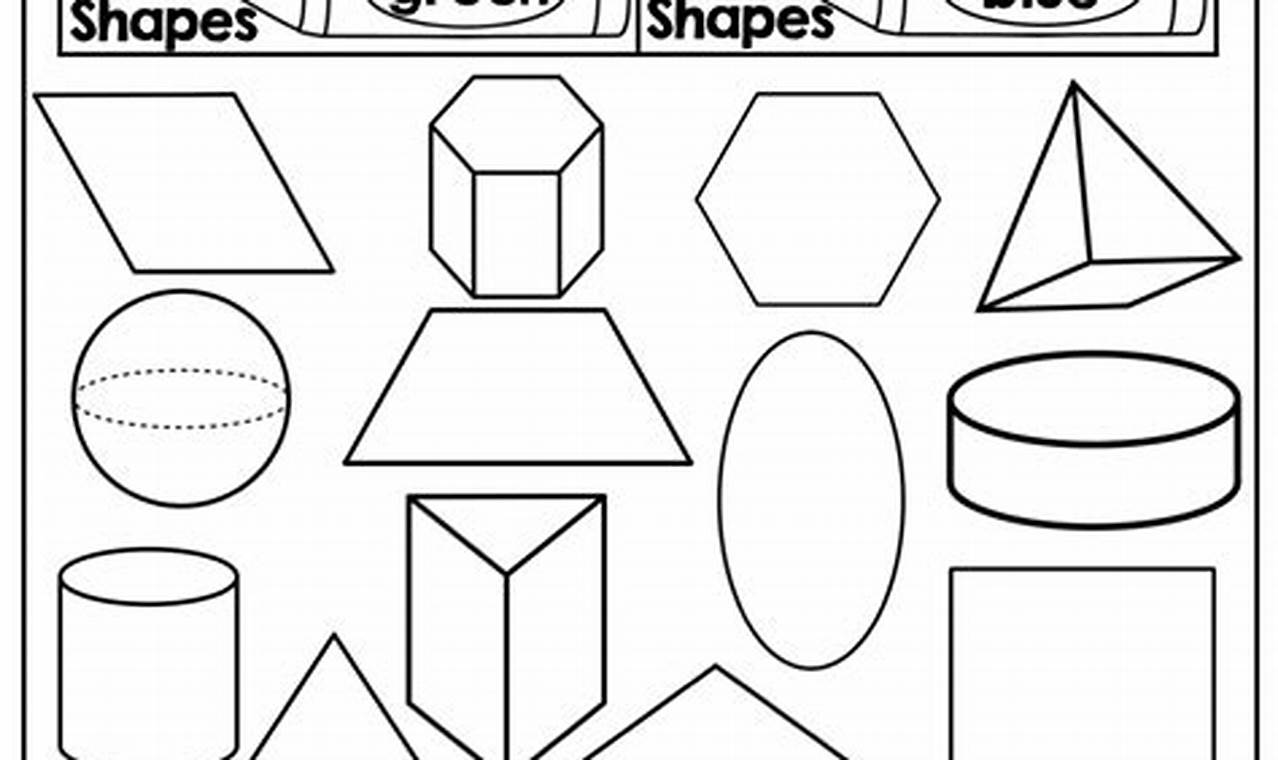Learning about shapes is a foundational element in early childhood education, paving the way for understanding geometry, spatial reasoning, and even art. Activity sheets focused on shape recognition and drawing help children develop crucial pre-writing and fine motor skills, making them more confident and prepared for future academic challenges. The “Tracing 2D and 3D Shapes Activity Sheets” is designed to make this initial exploration both educational and enjoyable.
The primary learning benefits of using the “Tracing 2D and 3D Shapes Activity Sheets” are multifaceted. These worksheets enhance essential skills such as shape recognition, hand-eye coordination, and fine motor control. Children develop the ability to differentiate between various two-dimensional and three-dimensional shapes, improving their visual perception. Tracing activities refine hand control, which is crucial for handwriting development. Furthermore, the worksheets foster concentration and the ability to follow visual instructions.
This activity sheet introduces children to a variety of common two-dimensional and three-dimensional shapes. Shapes such as circles, squares, triangles, rectangles, cubes, spheres, cylinders, and cones are presented in a clear and simple format. Each shape is outlined with a dotted line, providing a guide for tracing. The worksheets typically include multiple instances of each shape, allowing for ample practice. Some versions may also incorporate additional visual cues, such as arrows indicating the direction of the tracing lines. The straightforward design ensures that children can focus on learning the shapes without distractions.
To effectively utilize the “Tracing 2D and 3D Shapes Activity Sheets,” it is recommended to begin by introducing each shape individually. Adults can initially demonstrate how to trace the shape, emphasizing the starting and ending points. Children should be encouraged to hold their pencils correctly and trace along the dotted lines as accurately as possible. Provide gentle guidance and support as needed. To maintain engagement, it’s beneficial to incorporate short breaks or alternate between different shapes. Using crayons or colored pencils can also add an element of fun and creativity to the learning process.
To reinforce the concepts learned from the worksheet, several complementary resources can be beneficial. Kidtraces.com offers a variety of related worksheets that focus on shapes, colors, and patterns. Educational games that involve shape sorting and matching can further solidify understanding. Reading books with colorful illustrations of shapes also complements the learning process. Encouraging children to identify shapes in their everyday environment, such as recognizing a circle as a plate or a cube as a building block, is a practical way to apply their knowledge.
In summary, the “Tracing 2D and 3D Shapes Activity Sheets” offers a valuable tool for young learners to develop essential pre-writing and geometrical skills. Its structured approach, combined with fun and engaging activities, makes it an effective resource for building a solid foundation in early education. Parents and educators are encouraged to download and utilize these worksheets to support children’s learning journey. Explore more free worksheets on Kidtraces.com to continue fostering continuous learning and skill development.
